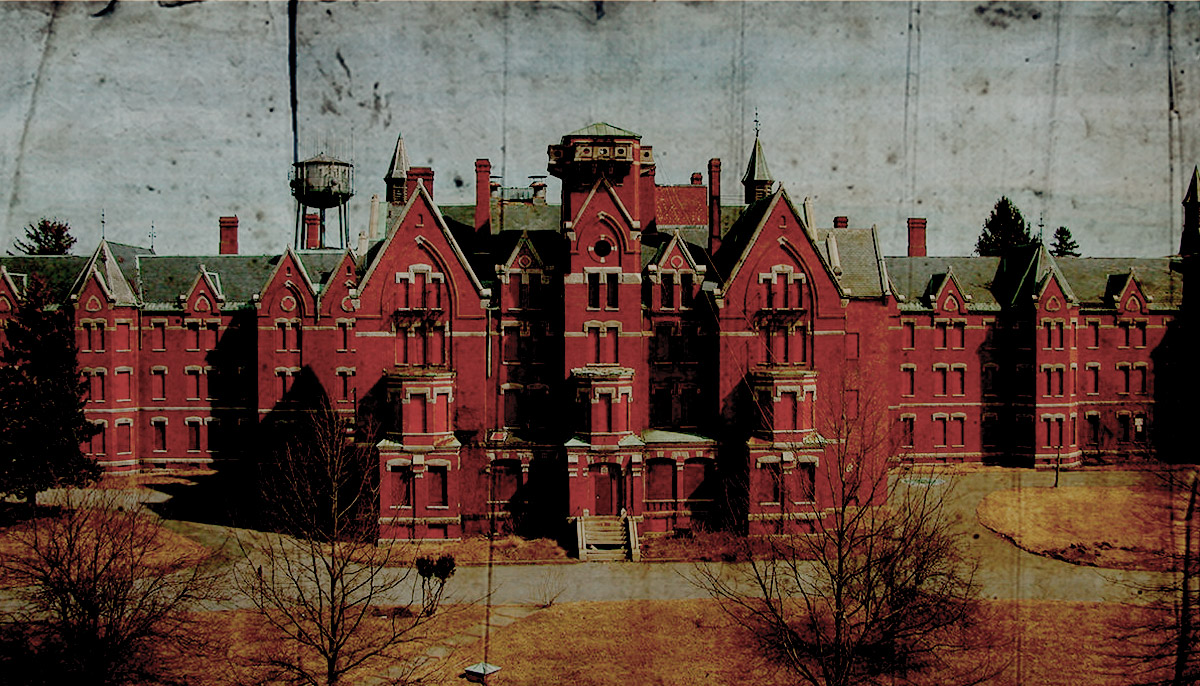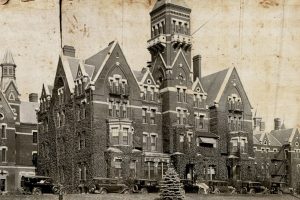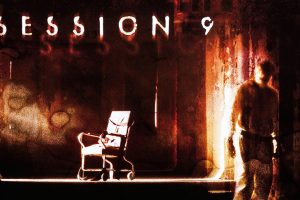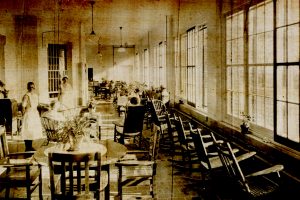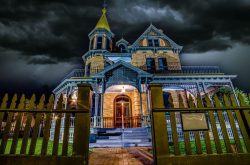Overview
In the late nineteenth and early twentieth century, mental health was broadly defined. Health conditions and mental capacities simply had yet to be discovered by medical science and as a result, thousands of people were not handled with enough care and concern. While highly debatable, their life-care was turned over by their families to the aid afforded by the state and they were placed into asylums. One such place that is registered to the U.S. National Register of Historic Places is the Danvers State Hospital. Located in the town of Danvers, Massachusetts, the now-defunct asylum has been chronicled as a hotbed of paranormal activity. After all, Danvers is an adjacent offshoot of Salem, where the infamous Salem Witch Trials took place.
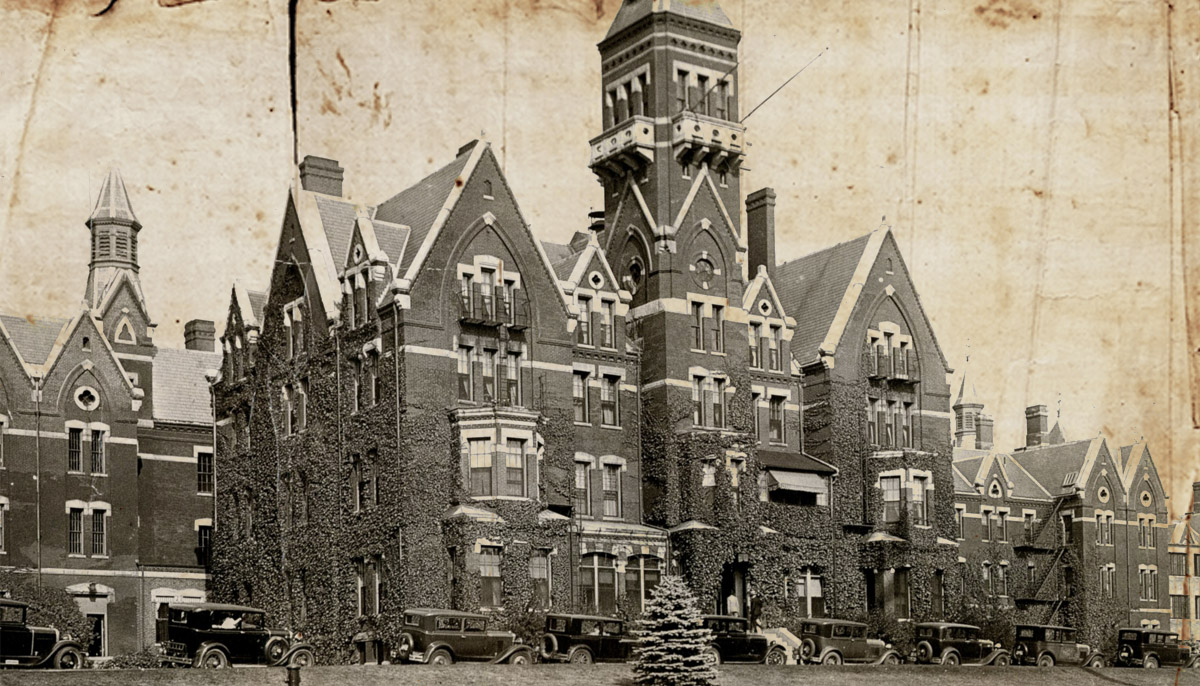
Originally constructed in 1878, the Danvers State Hospital opened under the original name of the Danvers Lunatic Asylum. It was designed by a Boston architect named Nathaniel Bradlee, who was responsible for the famous Jordan Marsh store in Boston as well as Boston’s Downtown Crossing. His design of the asylum had it perfectly laid out with four housing buildings that were separated by gender and divided by the towering administration building.
The outer fringe locations of the housing buildings on each side were reserved for the most hostile and violent patients. Slated with five hundred beds to house people, over the decades this number grew to two thousand, and many expansion buildings were added. With such a large population of increasing diverse patients with severe mental, physical, and emotional problems, it comes as no surprise that areas of the asylum eventually became haunted.
Is the Danvers State Hospital Haunted?
Upon opening, the asylum was quickly overcrowded. While the number of patients rapidly increased, the number of employees there did not. Greatly outnumbered and already poor in medical knowledge and technology for the time, the asylum administrators turned to the use of lobotomies to quell the out of control patients. The medical care while already poor, was even worse for those who were given lobotomies and as a result, a substantial number died.
But for a group of patients that died, more were added to the hospital to the point that the structure served as a revolving door for sure death. As the years passed, sanitary conditions deteriorated, and also electroshock therapy was made common so this only ramped up the volatile situation. This is the prevailing theory, coupled with the geographical tie to Salem as to why the asylum is haunted.
The Ghosts of Danvers Lunatic Asylum
Gerald Richards was a hospital administrator there in the late 1940s and early 1950s. Due to the nature of his job, he lived on the premises with his wife and three children. One of his children, Jeralyn Levasseur, has been one of the only people to ever step forward and verify that a ghost was seen in the administrator’s quarters.
In the quarters where she lived with her family as a child, she had memories of playing in the attic with her brother and sister. However, the attic soon became off-limits that were self-imposed after seeing the spirit of an elderly woman in the corner of the darkened attic, scowling at her and her siblings. That was not the only encounter with this particular apparition as she claimed that she was awoken several times at night by the same scowling spirit as it would slowly pull the covers straight off her bed.
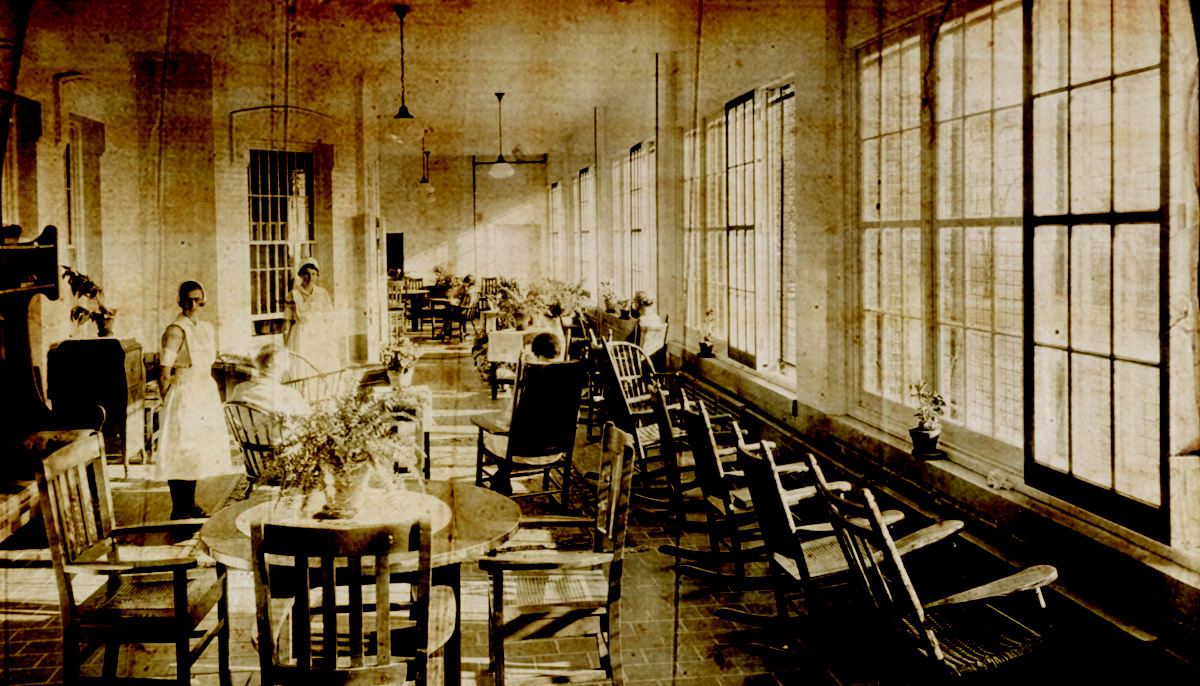
Unsurprisingly, the asylum closed in 1992. As it sat abandoned, this opened the flood gates for paranormal investigators and ghost hunters to explore the haunted site. Many groups started off by doing walkthroughs of the abandoned asylum. Almost instantly the audible cries and moans of the spirits said to be haunting the asylum are quite numerous. Electronic voice phenomenon (EVPs), is something that has captured and occurring at a fairly high level. Among the more chilling EVPs captured are a spirit saying, “I live here” and “I am warning you”.
Only near the closing of the asylum was it discovered to have small, underground tunnels connecting the buildings. Historians date these tunnels to the original construction of the hospital, meaning they were put in under the direction of the asylum’s first administrator Thomas Kirkbride, who was notorious in his methodology.
His tunnels have thought to have been constructed so as to keep the more violent patients completely out of sight, thus giving the asylum’s upper levels a more sedate and dignified look and preached to his infamous Kirkbride Plan that he always referred to as, “a special apparatus for the care of lunacy”. It should come as no surprise as ghost hunters and former hospital workers alike have seen Thomas Kirkbride’s ghost floating through the underground tunnels.
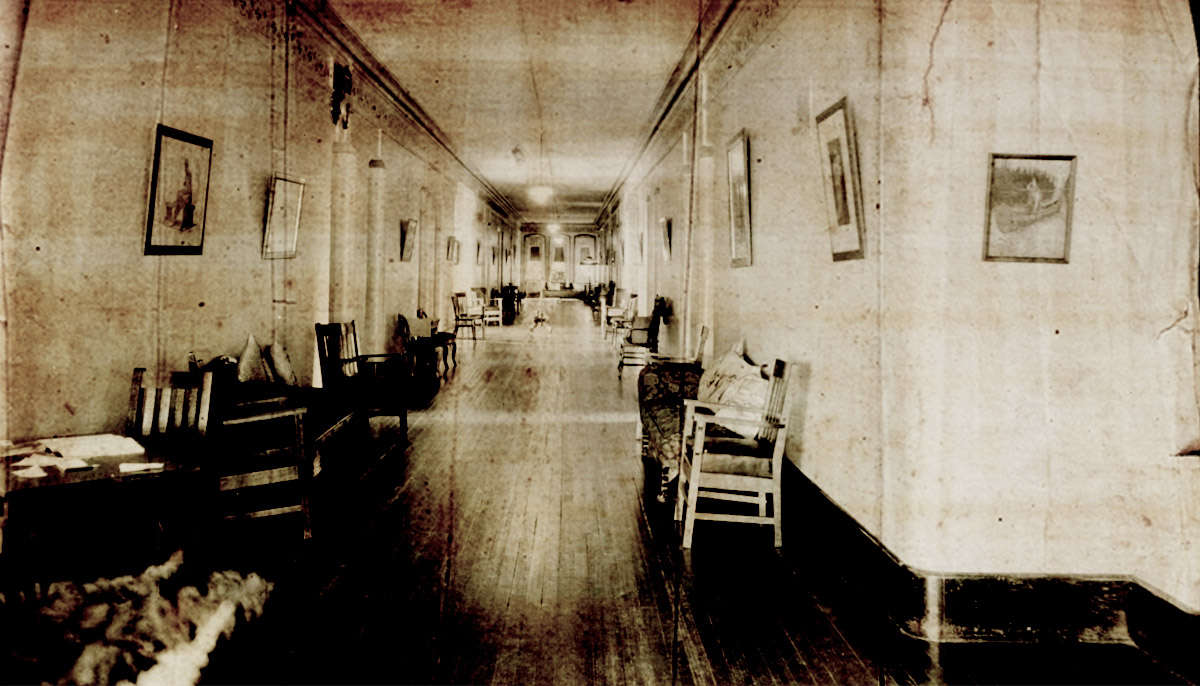
In 2005 the property was sold to a real estate developer and a series of the connecting buildings were torn down. In their place has gone a small collection of condo apartments. Not all of the buildings were totally demolished as those underground tunnels prevent this to a degree. Outback behind the grounds is the asylum’s cemetery. With such sacred ground, the developers have not constructed anything new on that part of the land.
People who live in the apartments now claim to hear moans and screams at night, theorized to be from the spirits still tied to the land. Many a Danvers police officer has responded to complaints of the terrifying noises at night only to find a desolate and empty lot, but night after night the screams are said to remain heard.
The Filming of Session 9
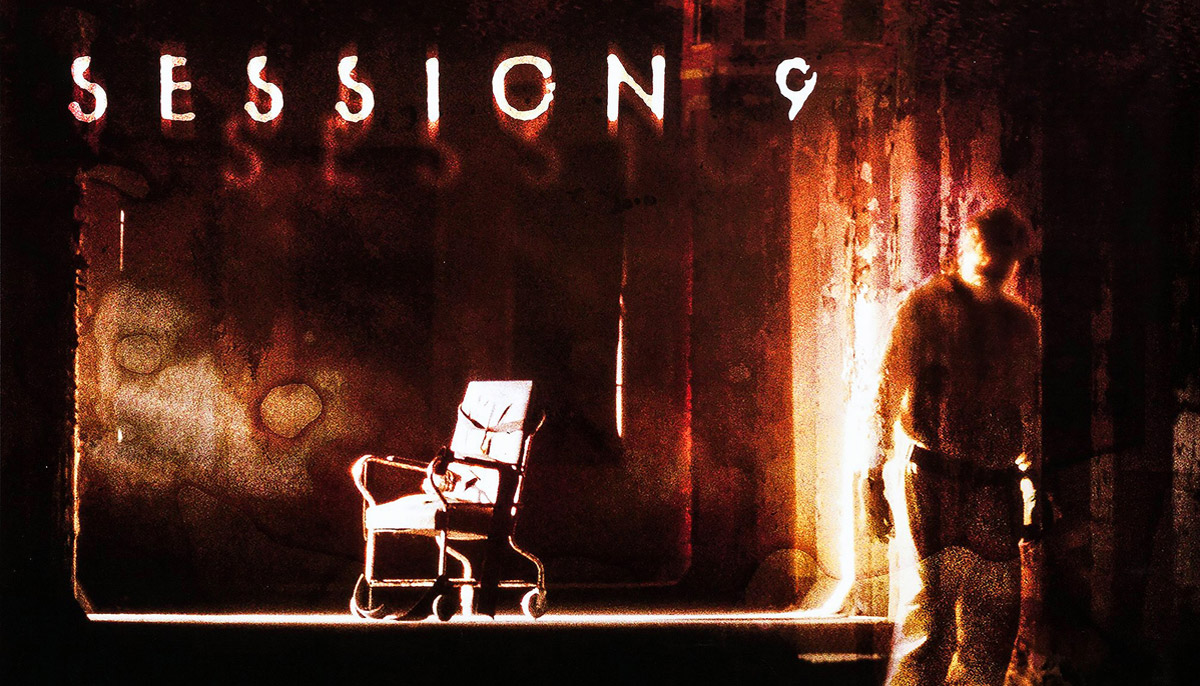
Before most of the hospital was demolished in 2006, Hollywood used some of the Danvers hospital, and many of it’s creepy and existing equipment as props, to make the cult classic film Session 9.
Session 9 is a 2001 psychological horror film directed by Brad Anderson and stars David Caruso, Peter Mullan, Stephen Gevedon, Paul Guilfoyle, Josh Lucas, and Brendan Sexton. It tells the story of a work crew assigned to remove asbestos from an abandoned mental institution. It doesn’t take long for the crew boss to hear voices and have one of his men go missing. As you can imagine, they don’t find him in their truck outside.
When asked about filming Session 9 at the Danvers State Hospital, David Caruso said,
“It was a place you never got comfortable in. It wasn’t like day three and we were throwing water balloons because it was so much fun to be there. It was always scary. You can really feel the pain of the people that went through Danvers. It’s a rough environment. It’s not fun. It’s on the film. They didn’t have to dress any sets, or anything. All of that stuff was sitting there. The federal government walked away from it about thirty years ago. It was a terrifying location.”

